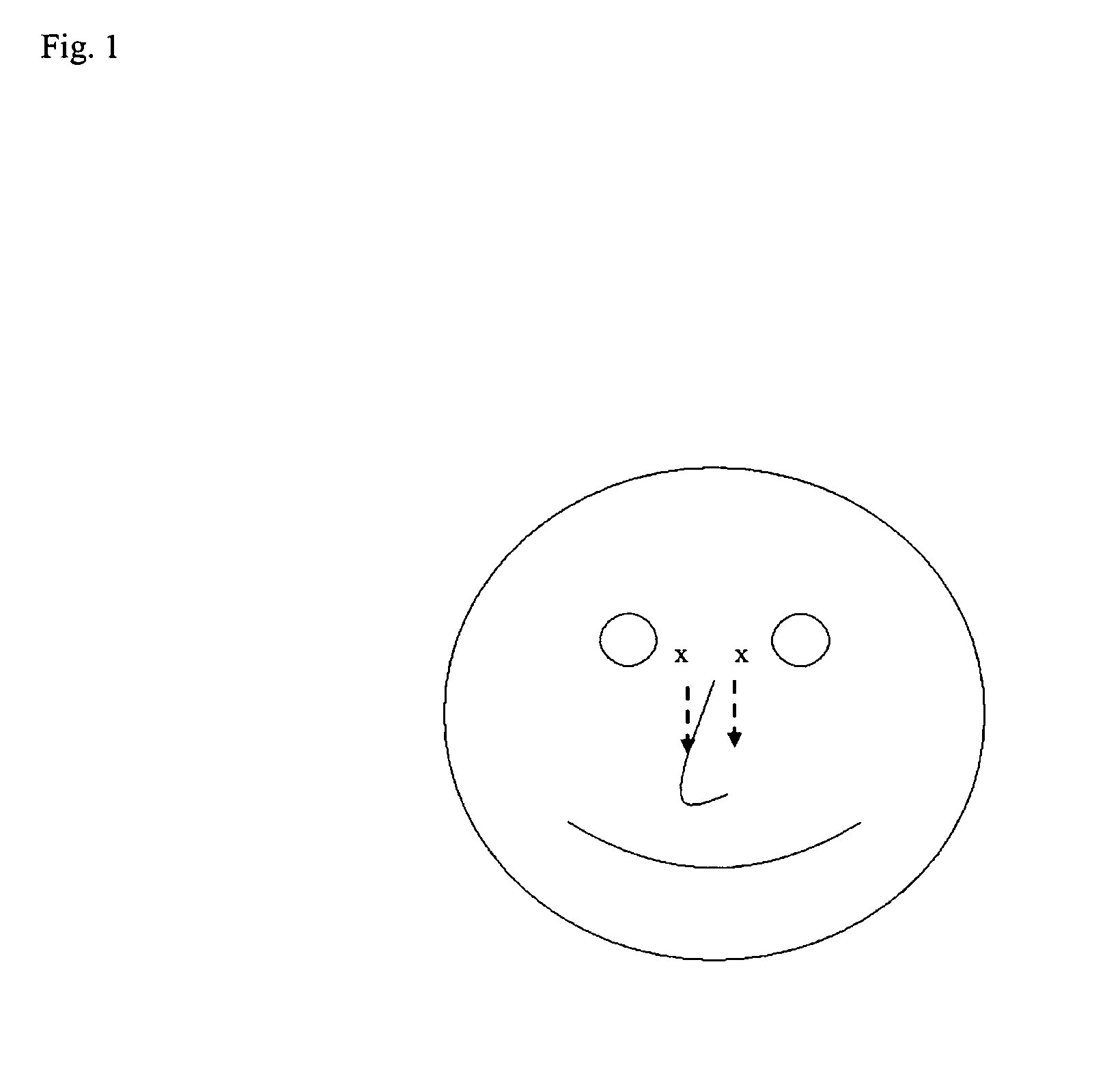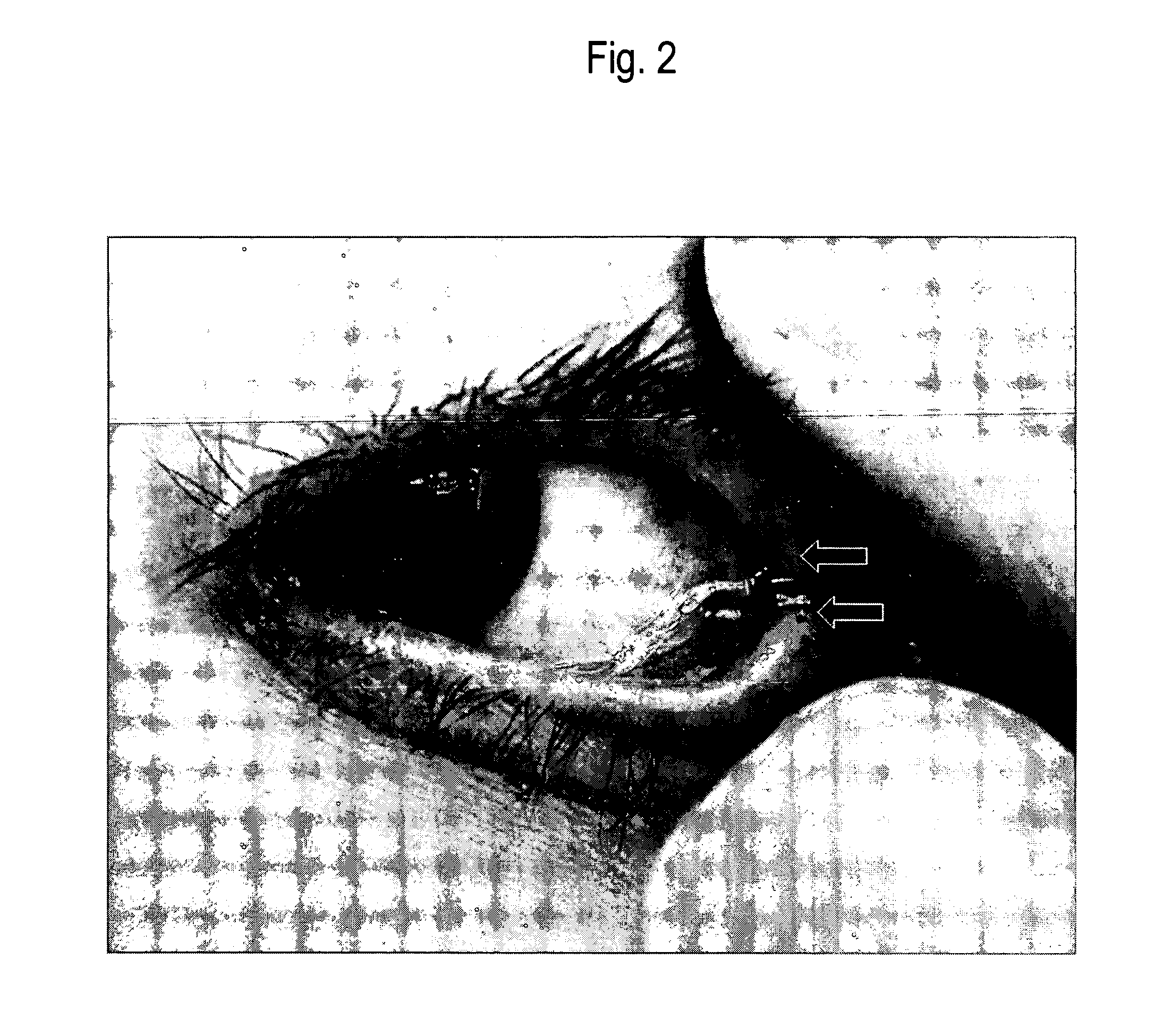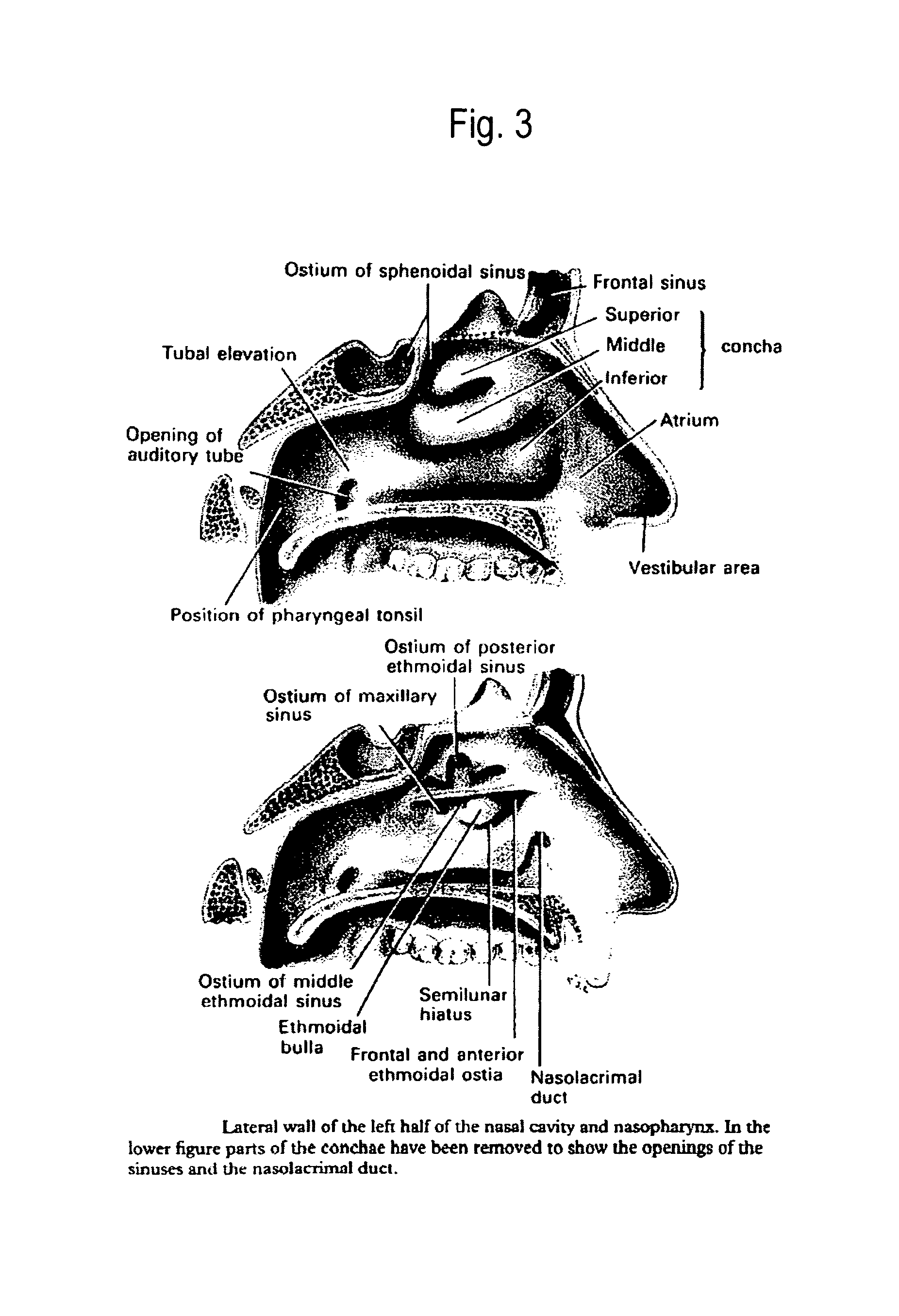Method of collecting nasopharyngeal cells and secretions for diagnosis of viral upper respiratory infections and screening for nasopharyngeal cancer
a technology of nasopharynge which is applied in the field of collecting nasopharyngeal cells and secretions for diagnosis of viral upper respiratory infections and screening for nasopharyngeal cancer, can solve the problems of high device cost, increased risk of infection, so as to reduce patient discomfort, reduce the risk of contamination, and achieve satisfactory yield of nasopharyngeal material
- Summary
- Abstract
- Description
- Claims
- Application Information
AI Technical Summary
Benefits of technology
Problems solved by technology
Method used
Image
Examples
examples
[0077]1. Collection of Nasopharyngeal Specimens for SARS Diagnosis.
[0078]In Spring of 2003, an outbreak of SARS occurred in Hong Kong. Towards the end of the outbreak, this invention was first tested on four recently admitted SARS patients.
[0079]All four patients had nose and throat swabs for molecular diagnosis of SARS by RT-PCR. Nasopharyngeal aspiration was not performed because of the fear of contracting SARS from patients. These patients were confirmed to have SARS by subsequent seroconversion to SARS coronavirus or by positive liver biopsy (RT-PCR) for the virus.
[0080]None of the nose and throat swabs were positive. In addition, stool was collected for RT-PCR, because it became known that significant numbers of SARS patients excrete the SARS coronavirus in the stool. However, none were positive in the four patients.
[0081]CURTI was performed for all four patients. Two patients were positive. This invention thus provided much better specimens compared with throat and nose swab. ...
PUM
| Property | Measurement | Unit |
|---|---|---|
| temperature | aaaaa | aaaaa |
| wavelength | aaaaa | aaaaa |
| immunofluorescent microscopy | aaaaa | aaaaa |
Abstract
Description
Claims
Application Information
 Login to View More
Login to View More - R&D
- Intellectual Property
- Life Sciences
- Materials
- Tech Scout
- Unparalleled Data Quality
- Higher Quality Content
- 60% Fewer Hallucinations
Browse by: Latest US Patents, China's latest patents, Technical Efficacy Thesaurus, Application Domain, Technology Topic, Popular Technical Reports.
© 2025 PatSnap. All rights reserved.Legal|Privacy policy|Modern Slavery Act Transparency Statement|Sitemap|About US| Contact US: help@patsnap.com



